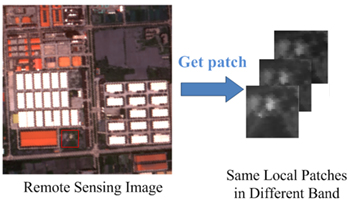
Stripe noise removal is a fundamental task in remote sensing image processing, which is of great significance in improving image quality and subsequent applications. The standard nuclear norm has been widely used to remove stripe noises, but it treats each singular value equally and affects its capability and flexibility in destriping. In this paper, we proposed a weighted low-rank spatial–spectral total variation (WLRSSTV) model by exploiting the weighted nuclear norm and global spatial–spectral total variation regularization. The split Bregman iteration is used to optimize the WLRSSTV model and to estimate the weight of the nuclear norm. Extensive experiments on both the synthetic and real remote sensing images validate that the proposed model can effectively remove the stripe noise and preserve more fine-scale details.